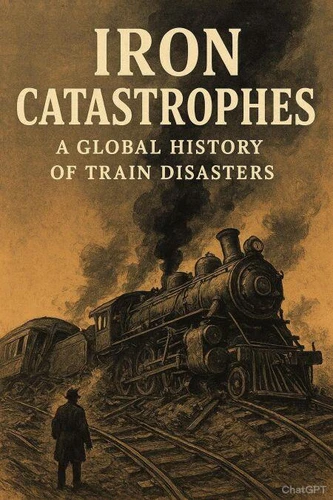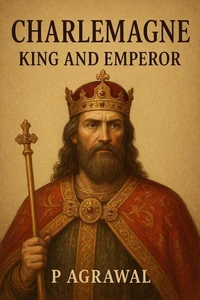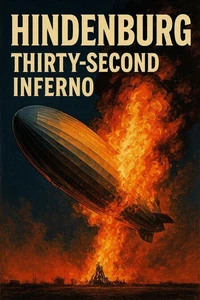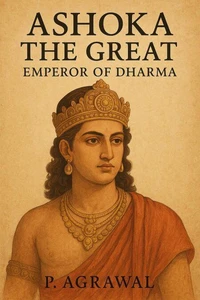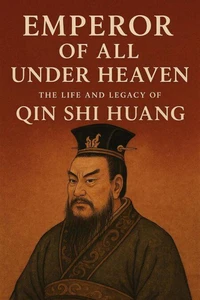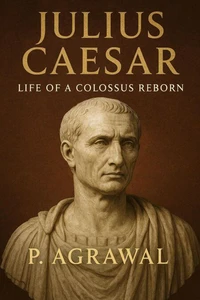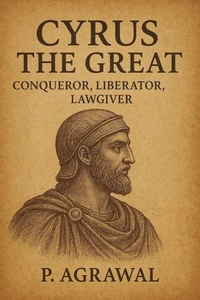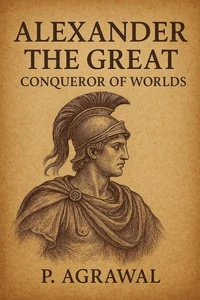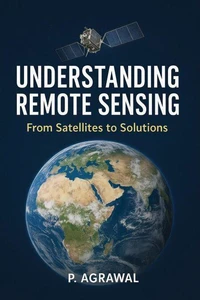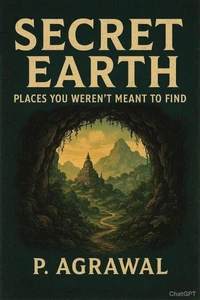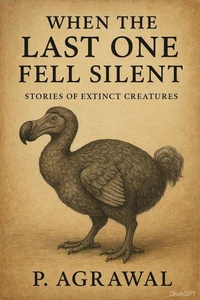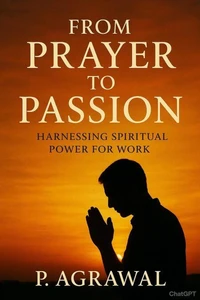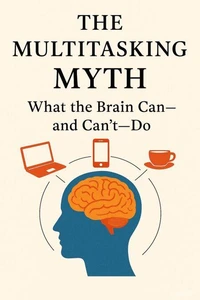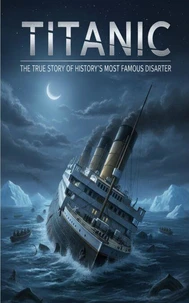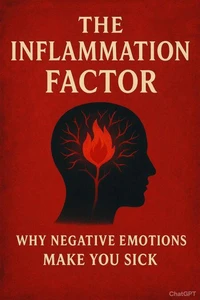Iron Catastrophes: A Global History of Train Disasters
Par :Formats :
Disponible dans votre compte client Decitre ou Furet du Nord dès validation de votre commande. Le format ePub est :
- Compatible avec une lecture sur My Vivlio (smartphone, tablette, ordinateur)
- Compatible avec une lecture sur liseuses Vivlio
- Pour les liseuses autres que Vivlio, vous devez utiliser le logiciel Adobe Digital Edition. Non compatible avec la lecture sur les liseuses Kindle, Remarkable et Sony
 , qui est-ce ?
, qui est-ce ?Notre partenaire de plateforme de lecture numérique où vous retrouverez l'ensemble de vos ebooks gratuitement
Pour en savoir plus sur nos ebooks, consultez notre aide en ligne ici
- FormatePub
- ISBN8231382132
- EAN9798231382132
- Date de parution20/09/2025
- Protection num.pas de protection
- Infos supplémentairesepub
- ÉditeurWalzone Press
Résumé
From the dawn of the railway age to the sleek high-speed trains of the twenty-first century, the story of the railroad has always carried a double edge-an instrument of triumph and transformation, and at the same time an arena of grief and devastation. Iron Catastrophes: A Global History of Train Disasters is a sweeping chronicle of how progress raced forward on steel tracks while continually stumbling into tragedy.
This book journeys across continents and centuries to chart the history of railway disasters in all their complex dimensions. Beginning with the earliest accidents of the nineteenth century, when untested locomotives burst their boilers or derailed on fragile tracks, it shows how railway travel was stamped by peril from its very birth. The death of British politician William Huskisson in 1830, struck down on the Liverpool and Manchester line's opening day, symbolized how quickly innovation could turn lethal.
Soon after came infernos, collisions in the fog, bridge collapses, and explosions that shocked a society intoxicated by speed yet horrified by risk. The narrative then widens to explore disasters across Europe, America, Asia, Africa, and the colonial world. Chapters recount Europe's notorious horrors-from Britain's Harrow collision to France's Versailles fire and Spain's Torre del Bierzo tragedy-where crashes shattered faith in modernity.
In America, endless expansion created reckless improvisations: wooden bridges that collapsed, locomotives that burned, collisions that littered small towns with wreckage. In Asia, the disasters grew on an almost unimaginable scale. India's catastrophic wrecks, Japan's cultural trauma at Amagasaki, Sri Lanka's tsunami train engulfed by waves, and China's modern tragedy at Wenzhou illustrate that even regions most reliant on the rails suffered losses measured in the thousands.
In the Soviet Union, disaster was compounded by secrecy, where tragedies like the 1989 Ufa explosion or Moscow Metro accidents were shrouded under censorship, scarred into memory but denied public reckoning. The book also turns to the unique dangers of tunnels and underground systems, where smoke and fire transformed confined spaces into tombs. It examines the deliberate dimension of catastrophe-railways attacked in war, sabotaged by rebels, and targeted by terrorists, from World War resistance movements to the Madrid and London bombings.
In every instance, ordinary passengers became unwilling symbols of vulnerability in times of conflict and hatred. Yet Iron Catastrophes is not solely about wreckage and statistics. At the heart of this history lies the human experience: the survivors who crawled from mangled carriages, the grief of families left behind, the inequalities exposed when the poor suffered more in flimsy cars than the wealthy in better-protected ones.
Their voices echo in inquiries, newspapers, folk songs, and memorials. Their suffering, paradoxically, also served as midwife to reform. Safety advances-automatic brakes, robust steel coaches, electronic signals-were born of mourning. Each improvement was purchased with lives lost, every innovation carrying a hidden epitaph. The final chapters bring the story into the modern era, where railways are statistically safer than ever yet remain vulnerable to rare but colossal tragedies.
Whether in Germany's Eschede disaster, India's rural derailments, or acts of terror on metropolitan systems, the lesson is clear: progress never fully erases risk. Iron Catastrophes is at once history and elegy, technical chronicle and human testimony. It invites readers to reflect on the paradox of modernity-that the same engines which deliver mobility and unity have also, time and again, carried mankind into catastrophe.
It is a story of steel and smoke, but also of resilience, memory, and the costly road to safety.
This book journeys across continents and centuries to chart the history of railway disasters in all their complex dimensions. Beginning with the earliest accidents of the nineteenth century, when untested locomotives burst their boilers or derailed on fragile tracks, it shows how railway travel was stamped by peril from its very birth. The death of British politician William Huskisson in 1830, struck down on the Liverpool and Manchester line's opening day, symbolized how quickly innovation could turn lethal.
Soon after came infernos, collisions in the fog, bridge collapses, and explosions that shocked a society intoxicated by speed yet horrified by risk. The narrative then widens to explore disasters across Europe, America, Asia, Africa, and the colonial world. Chapters recount Europe's notorious horrors-from Britain's Harrow collision to France's Versailles fire and Spain's Torre del Bierzo tragedy-where crashes shattered faith in modernity.
In America, endless expansion created reckless improvisations: wooden bridges that collapsed, locomotives that burned, collisions that littered small towns with wreckage. In Asia, the disasters grew on an almost unimaginable scale. India's catastrophic wrecks, Japan's cultural trauma at Amagasaki, Sri Lanka's tsunami train engulfed by waves, and China's modern tragedy at Wenzhou illustrate that even regions most reliant on the rails suffered losses measured in the thousands.
In the Soviet Union, disaster was compounded by secrecy, where tragedies like the 1989 Ufa explosion or Moscow Metro accidents were shrouded under censorship, scarred into memory but denied public reckoning. The book also turns to the unique dangers of tunnels and underground systems, where smoke and fire transformed confined spaces into tombs. It examines the deliberate dimension of catastrophe-railways attacked in war, sabotaged by rebels, and targeted by terrorists, from World War resistance movements to the Madrid and London bombings.
In every instance, ordinary passengers became unwilling symbols of vulnerability in times of conflict and hatred. Yet Iron Catastrophes is not solely about wreckage and statistics. At the heart of this history lies the human experience: the survivors who crawled from mangled carriages, the grief of families left behind, the inequalities exposed when the poor suffered more in flimsy cars than the wealthy in better-protected ones.
Their voices echo in inquiries, newspapers, folk songs, and memorials. Their suffering, paradoxically, also served as midwife to reform. Safety advances-automatic brakes, robust steel coaches, electronic signals-were born of mourning. Each improvement was purchased with lives lost, every innovation carrying a hidden epitaph. The final chapters bring the story into the modern era, where railways are statistically safer than ever yet remain vulnerable to rare but colossal tragedies.
Whether in Germany's Eschede disaster, India's rural derailments, or acts of terror on metropolitan systems, the lesson is clear: progress never fully erases risk. Iron Catastrophes is at once history and elegy, technical chronicle and human testimony. It invites readers to reflect on the paradox of modernity-that the same engines which deliver mobility and unity have also, time and again, carried mankind into catastrophe.
It is a story of steel and smoke, but also of resilience, memory, and the costly road to safety.
From the dawn of the railway age to the sleek high-speed trains of the twenty-first century, the story of the railroad has always carried a double edge-an instrument of triumph and transformation, and at the same time an arena of grief and devastation. Iron Catastrophes: A Global History of Train Disasters is a sweeping chronicle of how progress raced forward on steel tracks while continually stumbling into tragedy.
This book journeys across continents and centuries to chart the history of railway disasters in all their complex dimensions. Beginning with the earliest accidents of the nineteenth century, when untested locomotives burst their boilers or derailed on fragile tracks, it shows how railway travel was stamped by peril from its very birth. The death of British politician William Huskisson in 1830, struck down on the Liverpool and Manchester line's opening day, symbolized how quickly innovation could turn lethal.
Soon after came infernos, collisions in the fog, bridge collapses, and explosions that shocked a society intoxicated by speed yet horrified by risk. The narrative then widens to explore disasters across Europe, America, Asia, Africa, and the colonial world. Chapters recount Europe's notorious horrors-from Britain's Harrow collision to France's Versailles fire and Spain's Torre del Bierzo tragedy-where crashes shattered faith in modernity.
In America, endless expansion created reckless improvisations: wooden bridges that collapsed, locomotives that burned, collisions that littered small towns with wreckage. In Asia, the disasters grew on an almost unimaginable scale. India's catastrophic wrecks, Japan's cultural trauma at Amagasaki, Sri Lanka's tsunami train engulfed by waves, and China's modern tragedy at Wenzhou illustrate that even regions most reliant on the rails suffered losses measured in the thousands.
In the Soviet Union, disaster was compounded by secrecy, where tragedies like the 1989 Ufa explosion or Moscow Metro accidents were shrouded under censorship, scarred into memory but denied public reckoning. The book also turns to the unique dangers of tunnels and underground systems, where smoke and fire transformed confined spaces into tombs. It examines the deliberate dimension of catastrophe-railways attacked in war, sabotaged by rebels, and targeted by terrorists, from World War resistance movements to the Madrid and London bombings.
In every instance, ordinary passengers became unwilling symbols of vulnerability in times of conflict and hatred. Yet Iron Catastrophes is not solely about wreckage and statistics. At the heart of this history lies the human experience: the survivors who crawled from mangled carriages, the grief of families left behind, the inequalities exposed when the poor suffered more in flimsy cars than the wealthy in better-protected ones.
Their voices echo in inquiries, newspapers, folk songs, and memorials. Their suffering, paradoxically, also served as midwife to reform. Safety advances-automatic brakes, robust steel coaches, electronic signals-were born of mourning. Each improvement was purchased with lives lost, every innovation carrying a hidden epitaph. The final chapters bring the story into the modern era, where railways are statistically safer than ever yet remain vulnerable to rare but colossal tragedies.
Whether in Germany's Eschede disaster, India's rural derailments, or acts of terror on metropolitan systems, the lesson is clear: progress never fully erases risk. Iron Catastrophes is at once history and elegy, technical chronicle and human testimony. It invites readers to reflect on the paradox of modernity-that the same engines which deliver mobility and unity have also, time and again, carried mankind into catastrophe.
It is a story of steel and smoke, but also of resilience, memory, and the costly road to safety.
This book journeys across continents and centuries to chart the history of railway disasters in all their complex dimensions. Beginning with the earliest accidents of the nineteenth century, when untested locomotives burst their boilers or derailed on fragile tracks, it shows how railway travel was stamped by peril from its very birth. The death of British politician William Huskisson in 1830, struck down on the Liverpool and Manchester line's opening day, symbolized how quickly innovation could turn lethal.
Soon after came infernos, collisions in the fog, bridge collapses, and explosions that shocked a society intoxicated by speed yet horrified by risk. The narrative then widens to explore disasters across Europe, America, Asia, Africa, and the colonial world. Chapters recount Europe's notorious horrors-from Britain's Harrow collision to France's Versailles fire and Spain's Torre del Bierzo tragedy-where crashes shattered faith in modernity.
In America, endless expansion created reckless improvisations: wooden bridges that collapsed, locomotives that burned, collisions that littered small towns with wreckage. In Asia, the disasters grew on an almost unimaginable scale. India's catastrophic wrecks, Japan's cultural trauma at Amagasaki, Sri Lanka's tsunami train engulfed by waves, and China's modern tragedy at Wenzhou illustrate that even regions most reliant on the rails suffered losses measured in the thousands.
In the Soviet Union, disaster was compounded by secrecy, where tragedies like the 1989 Ufa explosion or Moscow Metro accidents were shrouded under censorship, scarred into memory but denied public reckoning. The book also turns to the unique dangers of tunnels and underground systems, where smoke and fire transformed confined spaces into tombs. It examines the deliberate dimension of catastrophe-railways attacked in war, sabotaged by rebels, and targeted by terrorists, from World War resistance movements to the Madrid and London bombings.
In every instance, ordinary passengers became unwilling symbols of vulnerability in times of conflict and hatred. Yet Iron Catastrophes is not solely about wreckage and statistics. At the heart of this history lies the human experience: the survivors who crawled from mangled carriages, the grief of families left behind, the inequalities exposed when the poor suffered more in flimsy cars than the wealthy in better-protected ones.
Their voices echo in inquiries, newspapers, folk songs, and memorials. Their suffering, paradoxically, also served as midwife to reform. Safety advances-automatic brakes, robust steel coaches, electronic signals-were born of mourning. Each improvement was purchased with lives lost, every innovation carrying a hidden epitaph. The final chapters bring the story into the modern era, where railways are statistically safer than ever yet remain vulnerable to rare but colossal tragedies.
Whether in Germany's Eschede disaster, India's rural derailments, or acts of terror on metropolitan systems, the lesson is clear: progress never fully erases risk. Iron Catastrophes is at once history and elegy, technical chronicle and human testimony. It invites readers to reflect on the paradox of modernity-that the same engines which deliver mobility and unity have also, time and again, carried mankind into catastrophe.
It is a story of steel and smoke, but also of resilience, memory, and the costly road to safety.

